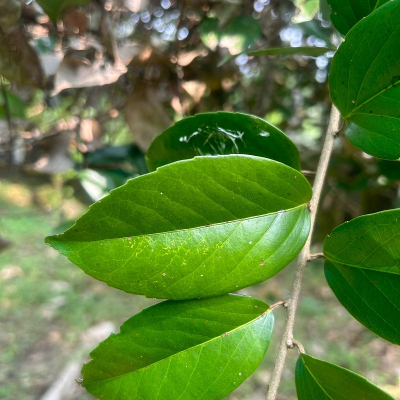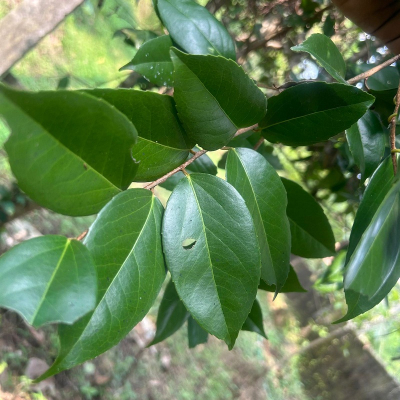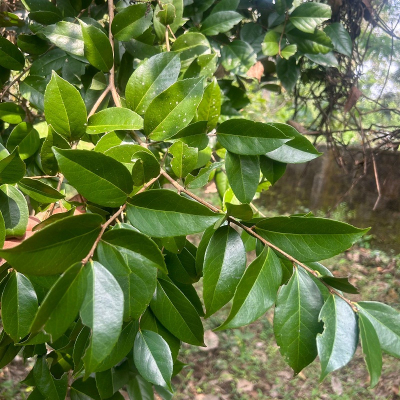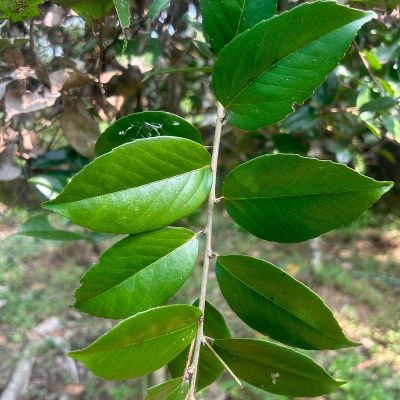Distribution and habitat: Evergreen and semi-evergreen forests
Botany: Thorny trees growing up to 8 m with grey, thin and smooth bark.
- Leaf: Leaves simple, alternate, spiral; petioled, stout, glabrous; lamina 12-22 cm x 6-8 cm, ovate, elliptic, base acute or rounded, apex acute or acuminate, margin crenate-serrate, coriaceous, glabrous except midrib below, shining above; 3-5 nerves from the base, prominent, lateral veins 4-6 pairs, pinnate, prominent, intercostae scalariform, slender, prominent.
- Flower: Unisexual, small, in axillary congested pubescent cymes; sepals 4 or 5 tomentose, small, imbricate; petals absent; stamens many; anthers versatile; ovary superior, urn-shaped, glabrous, incompletely 2-5 locular, ovules 2 in each cell; styles 5, reflexed, notched tip.
- Fruit: Berry, globose, obtusely ribbed, 1-1.5 cm across, bright red, of an agreeable acid flavour; seeds few, reddish.
Properties: The fruits are sweet and sour, astringent and acrid. it has refrigerant, digestive, stomachic, alexipharmic, anti-inflammatory, depurative, urinary astringent and liver tonic properties. The bark is astringent, acrid, refrigerant, stomachic and diaphoretic. The leaf extracts with methanol possess hepatoprotective, anti-inflammatory and antioxidant activities.
Uses: The barks are useful in vitiated conditions of pitta, odontalgia, diarrhea, hemorrhoids, stomachic and debility of the extremities. The fruits are useful in vitiated conditions of pitta and kapha, rheumatism, nausea, dyspepsia, flatulence, colic, inflammations, skin diseases, diabetes, jaundice and tumours.







